I am trying to curve fit 5 points in C. I have used this code from a previous post (Can sombody simplify this equation for me?) to do 4 points, but now I need to add another point.
// Input data: arrays x[] and y[]
// x[1],x[2],x[3],x[4] - X values
// y[1],y[2],y[3],y[4] - Y values
// Calculations
A = 0
B = 0
C = 0
D = 0
S1 = x[1] + x[2] + x[3] + x[4]
S2 = x[1]*x[2] + x[1]*x[3] + x[1]*x[4] + x[2]*x[3] + x[2]*x[4] + x[3]*x[4]
S3 = x[1]*x[2]*x[3] + x[1]*x[2]*x[4] + x[1]*x[3]*x[4] + x[2]*x[3]*x[4]
for i = 1 to 4 loop
C0 = y[i]/(((4*x[i]-3*S1)*x[i]+2*S2)*x[i]-S3)
C1 = C0*(S1 - x[i])
C2 = S2*C0 - C1*x[i]
C3 = S3*C0 - C2*x[i]
A = A + C0
B = B - C1
C = C + C2
D = D - C3
end-loop
// Result: A, B, C, D
I have been trying to covert this to a 5 point curve fit, but am having trouble figuring out what goes inside the loop:
// Input data: arrays x[] and y[]
// x[1],x[2],x[3],x[4],x[5] - X values
// y[1],y[2],y[3],y[4],y[5] - Y values
// Calculations
A = 0
B = 0
C = 0
D = 0
E = 0
S1 = x[1] + x[2] + x[3] + x[4]
S2 = x[1]*x[2] + x[1]*x[3] + x[1]*x[4] + x[2]*x[3] + x[2]*x[4] + x[3]*x[4]
S3 = x[1]*x[2]*x[3] + x[1]*x[2]*x[4] + x[1]*x[3]*x[4] + x[2]*x[3]*x[4]
S4 = x[1]*x[2]*x[3]*x[4] + x[1]*x[2]*x[3]*[5] + x[1]*x[2]*x[4]*[5] + x[1]*x[3]*x[4]*[5] + x[2]*x[3]*x[4]*[5]
for i = 1 to 4 loop
C0 = ??
C1 = ??
C2 = ??
C3 = ??
C4 = ??
A = A + C0
B = B - C1
C = C + C2
D = D - C3
E = E + C4
end-loop
// Result: A, B, C, D, E
any help in filling out the C0...C4 would be appreciated. I know this has to do with the matrices but I have not been able to figure it out. examples with pseudo code or real code would be most helpful.
thanks

 .
. where each
where each  with a coefficient of
with a coefficient of , being the divided difference.
, being the divided difference. .
.
 .
.